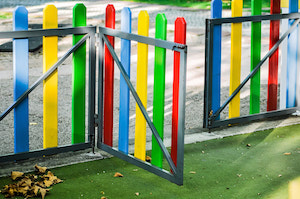Do you have access to an outdoor play area for your class? Are you desperate to improve it but don’t quite know where to start? Fear not, The Autism Junction has 10 ideas when planning an outdoor play area for you. Read on.
We will share our child centred approach and help you avoid many pitfalls, (that we have made over the years!). We have included an explanation as to why each area is important – for you to take to those above when submitting your outdoor area plans.
School Outdoor Areas
Without doubt, Early Years settings have some of the most fun, engaging and exciting outdoor areas.
Many adults would be happy on wellbeing retreats offering similar experiences; let your inner performer out on the wooden stage, paint freely on huge canvas, dress up and get into role as if you don’t have a care in the world. Mix the perfect mud cake in the mud kitchen. Jump in puddles, lessons in nature and much more. Wooden equipment has taken over and following a child-led Montessori approach has become the new norm.
The thrill of being handed a catalogue by a senior member of staff and being told you have a budget to improve your outside area! It doesn’t get much better than this in teaching! I usually get drawn to the big expensive equipment first, you know the heavy duty role play shop type thing. A mud kitchen set. A huge wall display of numbers and letters. I picture the most wonderful play area for children to enjoy and I sit back and feel good about my job.
Then I think about what my children actually need.
Children with autism are not bigger sized early years kids
As with everything in your setting, when it comes to children with autism, you have to teach yourself first, to think differently.
Put the catalogue away and turn off the screen. Think about where your children are at and what they need in terms of the following areas. Schools and cohorts do change so don’t be fixed on just your current class. What will the needs of children in the future using your outdoor area be? Think in terms of:-
- sensory needs
- physical needs
- social skills
- communication
- life-skills
Coming up is how to plan the main areas, however you might also want to take into consideration the following points.
Think about….Buying 2 of certain items. If you budget allows you to do this, select items which you think may be well tested in your outside area. It’s good practice to always have a spare gym ball (deflated!) as an extra.
Some equipment I have found will be loved so much that I have to have a back up plan. Guaranteed that 1 piece of your new equipment will either get broken or be fought over as it is so popular.
A rotation for activities – What if someone becomes fixated on 1 thing and refuses to try out any other areas? What if a child believes the gym ball is just for them and no on else? Maybe one activity could be swapped out each day. It’s OK to say something is not available today. Just try not to make it a surprise. Do not swap everything each day!
10 top outdoor play area ideas for your autistic children
1 Visual Stimulation
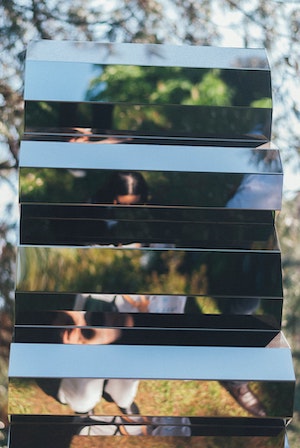
Outside areas can be great places to explore freely and for those who seek visual stimulation this can be their favourite place to be. Have you ever stood and noticed the movement of leaves in a tree? If you need to add further stimulation try these pieces of equipment.
- mirrors – at an angle to explore
- mirror window transfers
- sequinned material
- spinning spirals hanging down
- spinning windmills
2 Heavy Loads
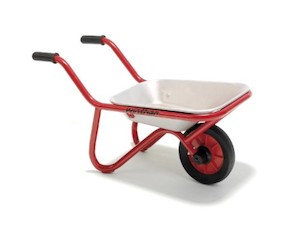
How can kids regulate themselves in your outdoor area? Deep pressure is recommended for many to calm the body and mind. This can be achieved through squashing activities but you can also engage the body through heavy load type activities.
- Outdoor beanbags
- Peanut ball
- Tyres to move
- Wheelbarrowing heavy items
- Monkey bars to swing on
3 Break Out Area
Where can kids go if they become over stimulated? Create a calm and quiet are with reduced visual and physical demands.
- tent
- soft blankets & cushions
- create a den from blankets and clothes pegs
4 Jumping
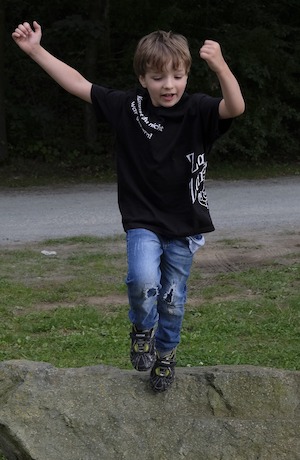
Do you have kids who will climb and jump off furniture? Create areas where it is OK to do this. The body gets a lot of sensory feedback from jumping, so accept this but make it safe.
- trampette
- blocks & logs to jump on and off
5 Curiosity Table
How do you get kids to engage with curriculum work outside? You might already use topic the tables for children to explore. I would suggest that an adult should be at this area, modelling the activity and ideally showing delight and wonder at the task! Depending on ability levels this could be an area showing how to play. 2 sets of the same equipment are needed for this type of activity. Read our blog for more information on Students with Autism and Play.
- tuff spot
- table
- seasonal
- English or maths based
6 Sand and Water Area
Do you have any kids who adore water in your class? Sand and water areas can be an absolute favourite for many children with autism. I suggest you assess as soon as possible who your water babies are as I guarantee they will be in it the minute you turn your back. If water play becomes an issue, then think about creative problem solving. Saying “no” and putting the water tray away will probably lead the child to spending more time playing in the bathroom sink. You would have simply moved the need to an unregulated place, which is not ideal.
Obviously a child climbing into a water tray, fully clothed each day is not great. So try to observe what exactly the child is getting out of this behaviour. Water play can be achieved with a very small amount of water. A spray bottle is great for this. The amount of accessible water can be regulated and children can be given all in one water proof outfits to wear.
- trays or deeper troughs
- funnels
- spray bottle
- watering cans
- containers
- jugs
- guttering
7 Swinging, Rocking and Spinning
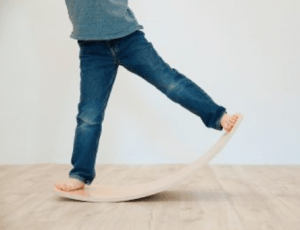
How are your kids who seek out the sensory vestibular movements, going to get their needs met in a safe way? I see some of the resources for this as luxury items but often the most beneficial. If you are fortunate you may be able to fix some kind of swing or hammock in your outside area. There are many fabric type swings on the market where the child receives a secure squeeze at the same time. This can be great for helping to regulate emotions too.
- swing
- hammock
- rocking chair
- wobble board
- ribbon on stick – twirling
- spinning seat
For simple toys made with natural materials do check out the company CAPIKOOA. Their curvy balance board is a great example of how we can provide vestibular input and an ideal size for classroom storage too.
8) Communication
How are your children going to express themselves outside? I have found that it’s actually really difficult to have an accessible communication device available the entire time. Who wants to carry anything around while they play? We have trialled this large scale communication board, which we found on Pinterest and attached it to a fence. The power of communication boards! We create fun options too where the kids have control and make the adults do various tasks outside.
- large whiteboard
- large, laminated images from communication board (I want, more, bike, trampette, spinning…etc)
Give the children an opportunity to request for:- Miss Kim / on trampette!
9) WOW! Area
Where are you going to have adult led learning? How can you compete with all the amazing items you have just added to your shopping basket? Try a WOW area. It needs to have a space of its own. This area is special. It could be where you hold your Attention Autism sessions, where you start your outside session from or where you come together for a song or dance. You could read a story from here or have a puppet show. Set up a position for a teacher and opposite put a semi-circle of chairs / cushions / logs for the kids to sit on. When you sit in your chair – the kids know something worth paying attention to is going to happen and over time they will gather round.
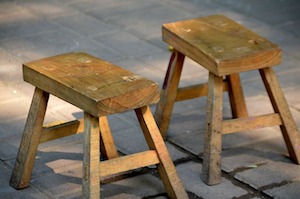
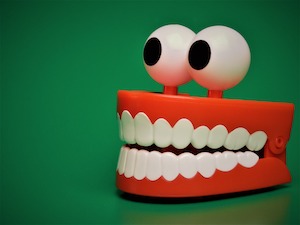
- bucket of small toys
- puppets
- seating – small bean bags / stools
10) Wheels
You have a really big budget and you have space? Add bikes, trikes, scooters and wheely boards to your shopping list. Draw out a track and parking areas for the equipment. Clearly identified areas will visually explain where to go and where to put the equipment, when finished. If your money will stretch – there are some great wagons to attach to the back of trikes to encourage joint play. It’s wonderful seeing your kids take each other for a ride!
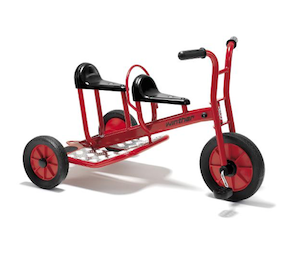
- bikes and trikes
- scooters
- wheely boards
There we have it, The Autism Junction’s top 10 outdoor play area ideas for autistic students. Get creative and have fun!
For more ideas visit our pinterest board https://www.pinterest.co.uk/theautismjunction/outdoor-play-area/
thinking differently
The Autism Junction
